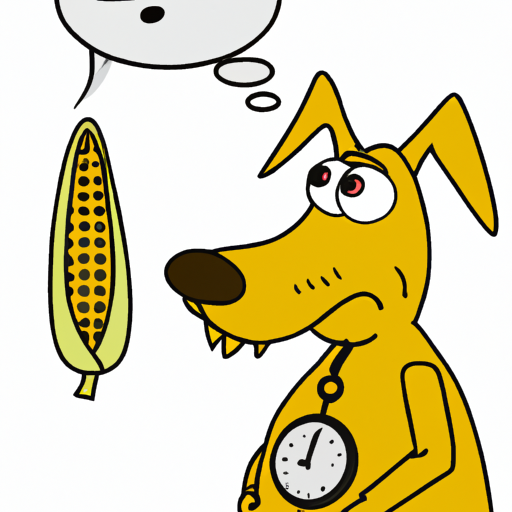As a dog owner, it’s essential to be aware of the potential dangers lurking in your kitchen, and one often overlooked hazard is the humble corn cob. While corn kernels are safe for dogs to eat, the cob itself can pose a serious risk if ingested. Let’s dive into a detailed analysis of the key factors involved in this issue, ranging from the initial ingestion to the potential consequences and treatment options.
Table of Contents
1. The Dangers of Corn Cobs
2. How Long Can a Corn Cob Stay in a Dog’s Stomach?
3. Symptoms to Watch Out For
4. Treatment Options
5. Prevention Measures
6. Frequently Asked Questions
Key Takeaways
* Corn cobs can pose a serious risk to dogs if ingested.
* The time a corn cob stays in a dog’s stomach can vary.
* Prompt medical attention is crucial.
* Prevention is the best measure to ensure your dog’s safety.
The Dangers of Corn Cobs
When a dog ingests a corn cob, it can become lodged in their digestive tract. This is because corn cobs are not easily broken down or digested by a dog’s stomach. It essentially becomes a foreign body inside your pet, which can cause serious health problems, including blockages, infections, and even death if not treated in time. According to PetMD, dogs swallowing objects is a common emergency they encounter.
How Long Can a Corn Cob Stay in a Dog’s Stomach?
The time a corn cob remains in a dog’s stomach can vary widely. Depending on the size of the cob and the dog, it could pass through in a matter of hours, or it could remain lodged for days or even weeks. More importantly, the longer the cob stays, the higher the risk of complications. A detailed guide on OneTopDog provides more information on this.
Symptoms to Watch Out For
It’s crucial to monitor your dog for symptoms if you suspect they’ve ingested a corn cob. These may include:
1. Vomiting
2. Loss of appetite
3. Lethargy
4. Abdominal pain
5. Diarrhea or constipation
If you notice any of these symptoms, it’s important to seek veterinary care immediately. A timely response can make a significant difference in your pet’s prognosis.
Treatment Options
Treatment for a dog who has ingested a corn cob often involves surgery to remove the foreign object. In some cases, an endoscopy may be used if the cob is still in the stomach. This is a less invasive procedure that uses a long, flexible tube with a camera to retrieve the cob. You can learn more about this process on OneTopDog.
Prevention Measures
The best way to prevent your dog from ingesting a corn cob is by ensuring they don’t have access to them. Keep your trash securely closed and don’t let your dog near the table during meals. Training can also be helpful in teaching your dog what is and isn’t appropriate to eat. For more tips on dog training, visit OneTopDog.
Frequently Asked Questions
Q: Can a corn cob kill a dog?
A: Yes, if left untreated, a corn cob can cause serious complications that could be fatal.
Q: How do I know if my dog has swallowed a corn cob?
A: Symptoms like vomiting, loss of appetite, lethargy, abdominal pain, diarrhea, or constipation can indicate your dog has swallowed a corn cob.
Q: What should I do if my dog has swallowed a corn cob?
A: Seek immediate veterinary care. This is a medical emergency.
In conclusion, while corn cobs can seem like a harmless leftover, they can pose a serious risk to your dog’s health. As a responsible pet owner, it’s crucial to keep such potential hazards out of your dog’s reach and to seek immediate veterinary care if your dog has ingested a corn cob.



